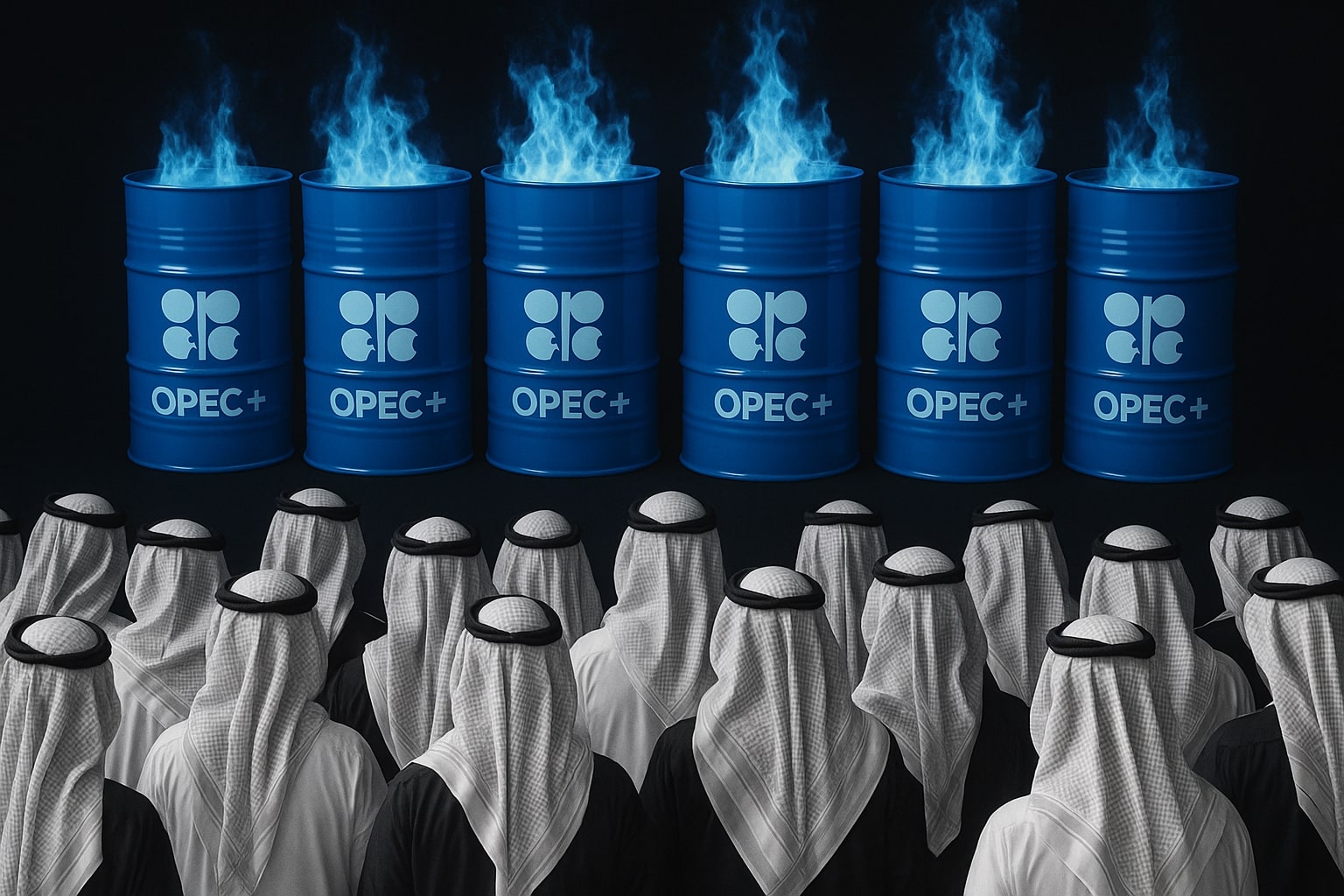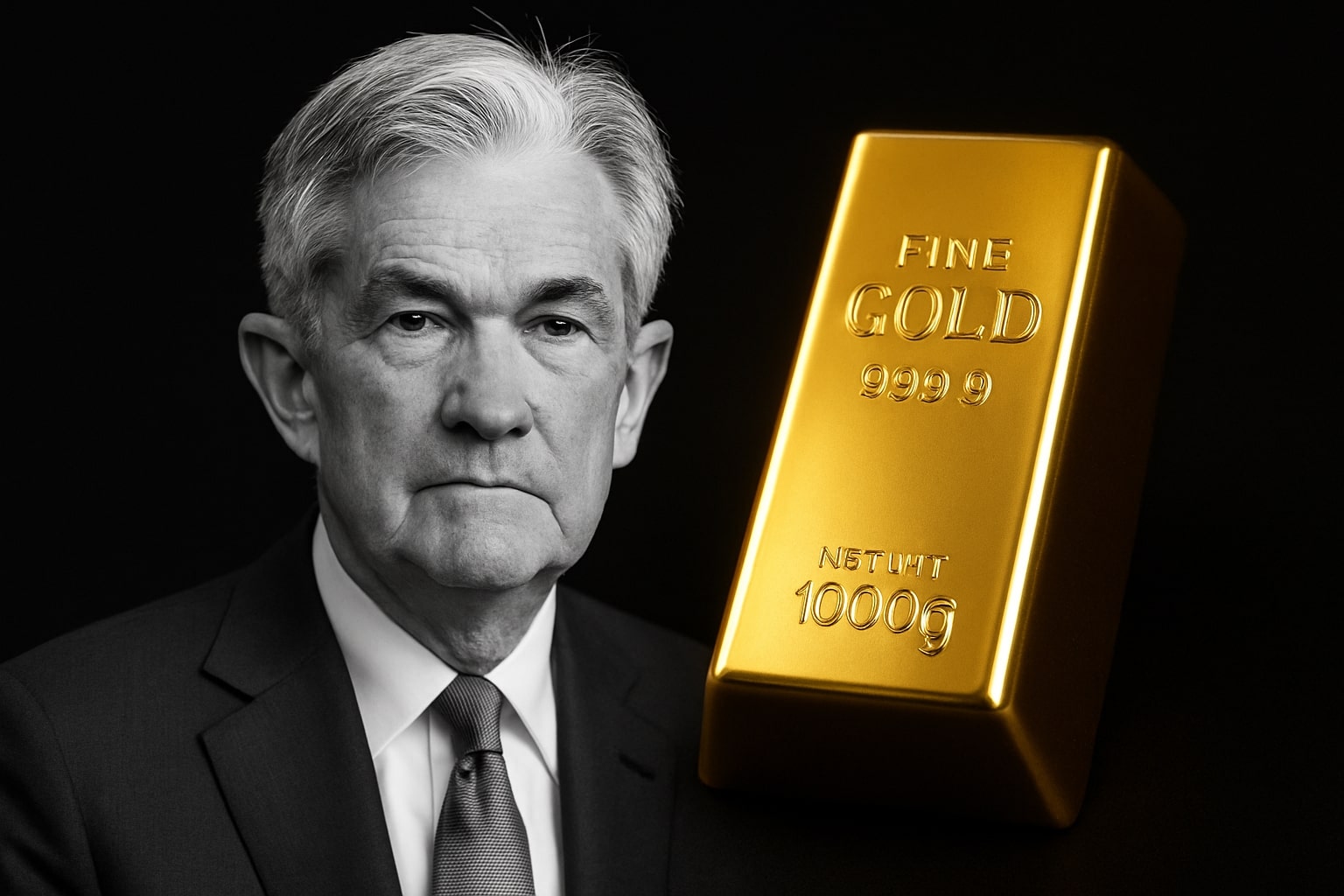
Oil Prices Climb Over 3%: Can WTI and Brent Crude Sustain the Momentum Above $60?
Oil traders are closely watching the U.S.-China trade talks, OPEC+ output decisions, and geopolitical developments. Are the recent gains sustainable or is a price pullback ahead? | That's TradingNEWS
Oil Prices Surge Amid Optimism for U.S.-China Trade Talks and U.S.-UK Agreement
Oil prices saw a notable jump, with Brent crude (BZ=F) rising by 2.7% to $62.75 per barrel and West Texas Intermediate crude (CL=F) increasing by 3.0%, reaching $59.86 per barrel. This surge came despite the ongoing uncertainties around global demand and trade tensions. The catalyst for the price rise was a series of geopolitical and economic factors, notably President Trump’s announcement of a U.S.-UK trade agreement and the growing optimism surrounding upcoming U.S.-China trade talks. As the two largest global oil consumers, any resolution or progress in their trade negotiations would provide significant relief to the oil market, especially after months of trade-related volatility.
Impact of the U.S.-UK Trade Deal on Oil Prices
President Trump's unveiling of the U.S.-UK trade deal injected optimism into the markets, although some analysts pointed out the deal's limited economic impact. The agreement promises to reduce tariffs on UK exports, especially in the automotive and steel sectors, which will likely benefit both economies. Despite the deal being seen as symbolic by some economists, it raised expectations that more trade agreements between the U.S. and other countries, including China, would follow. For the oil market, these signs of trade reconciliation signal reduced tensions, which could curb the risk of economic slowdown and dampen fears about waning global oil demand. Analysts noted that the deal's specifics, such as tariff reductions and new market access for U.S. goods, have reinforced the optimism among traders that the global economy might be on the brink of recovery.
OPEC+ Supply Increases Weigh on Oil Prices
However, the outlook for oil prices remains uncertain as OPEC+ has decided to increase its oil output targets in an attempt to counteract declining global supply and the market’s fears of an economic slowdown. OPEC’s output fell slightly in April despite plans for higher production, particularly due to a decrease in supply from Venezuela. The reduction in output was also influenced by political tensions, such as U.S. sanctions on Iranian oil. The increase in supply from OPEC+ will likely add downward pressure on prices, especially as global demand for oil remains muted due to factors like weak economic growth in China and the broader risk-off sentiment in financial markets. Citi Research revised its Brent crude price forecast for the next three months, lowering it from $60 to $55 per barrel, citing the effects of these increases in oil output.
Geopolitical Tensions and Their Effect on Oil Markets
Geopolitical developments, particularly the U.S.-Iran conflict and continued tensions in the Middle East, are critical to oil price movements. U.S. sanctions against two Chinese refiners for purchasing Iranian oil have exacerbated the situation, leading to difficulties in receiving crude from Tehran. This has added complexity to the oil supply chain, especially for countries like China, which relies heavily on Iranian crude. These sanctions come as the U.S. ramps up pressure on Iran, potentially affecting the Brent crude market by constraining supply. The fear of restricted Iranian oil could drive prices higher in the event of further sanctions, with Brent crude possibly surpassing $70 per barrel. If a U.S.-Iran nuclear deal were to materialize, it could push Brent crude down toward $50 per barrel, reflecting an oversupply scenario.
Oil Prices in the Short-Term: A Mixed Outlook
In the short term, the outlook for WTI and Brent crude prices remains mixed. The oil futures curve has been signaling conflicting indicators: backwardation for the near-term contracts and contango for longer-term contracts. This rare "smile-shaped" curve suggests that immediate oil prices may tighten due to concerns about short-term supply, but a longer-term surplus is expected as the effects of Trump’s tariffs and increased production from OPEC+ play out. As of now, oil prices seem to be supported by trade optimism, but supply increases from OPEC+ and the ongoing geopolitical tension in the Middle East remain significant risks to sustaining higher price levels.
Refiners' Earnings Soar Despite Lower Oil Prices
On a brighter note, refiners are posting impressive earnings despite lower oil prices. U.S. refiners, especially those on the Gulf Coast, have seen profit margins double due to the cheap crude being processed into gasoline and other refined products. Chevron, Valero, and Phillips 66 have reported solid performances in their refining units, with Phillips 66 even managing to report $796 million in net income despite weaker margins in certain regions. The uptick in refining margins shows the resilience of the sector in the face of lower crude prices. However, Marathon Petroleum reported a Q1 loss, impacted by unplanned downtime and weaker-than-expected margins. The divergence in refinery performance highlights how certain segments of the oil market remain profitable even when crude prices are lower.
OPEC+ Output Cuts and Their Impact on Oil Supply
The OPEC+ decision to unwind production cuts has set the stage for an increase in oil supply, which is likely to weigh on prices in the medium term. Saudi Arabia and its partners have committed to increasing oil production by 411,000 barrels per day (bpd) starting in June 2025. This is part of a broader effort to address low oil prices and a potential surplus in the market later in the year. Kazakhstan, one of OPEC+'s largest producers, has been repeatedly violating its production quotas, which adds further complexity to the group's ability to stabilize prices. The situation in Venezuela and Libya is also contributing to a volatile oil supply picture, as sanctions and political instability continue to disrupt production in these regions.
The Role of Global Economic Sentiment in Oil Prices
The global economic sentiment continues to play a pivotal role in determining the direction of oil prices. Analysts predict that global oil demand will increase by 1.3 million bpd in the third quarter of 2025, with OPEC+ output increasing by 1 million bpd to meet this demand. However, with China's economic slowdown and a more cautious global trade environment, the increase in supply from OPEC+ may result in an oversupply scenario later in the year. If the global economy experiences a recession, oil prices could see a sharp decline, potentially pushing Brent crude and WTI below the $50 per barrel level. Conversely, if the global economy picks up, especially with the potential resolution of U.S.-China trade tensions, oil prices could experience a significant rebound, potentially exceeding $70 per barrel.
What Does the Future Hold for Oil Prices?
As of now, WTI and Brent crude prices are primarily driven by geopolitical developments, trade negotiations, and the actions of OPEC+. Given the complex interplay between supply and demand, the immediate outlook remains uncertain. In the short term, WTI and Brent crude may experience further fluctuations as traders react to the latest headlines regarding tariffs, trade deals, and OPEC+ production increases. However, the refining sector appears to be more resilient, providing a buffer against the potential weakness in crude prices. Ultimately, oil prices will depend on whether the current optimism around U.S.-China trade talks can sustain momentum or if global economic conditions take a turn for the worse. Investors should remain cautious, as oil’s volatility is unlikely to subside in the near future. WTI could reach $70 per barrel if positive trade developments continue, but the risks of a global surplus and reduced demand could keep Brent crude prices below $60 per barrel in the long term.
That's TradingNEWS
Read More
-
AMD Stock Price Forecast - AMD Shares Soars to $258.32 as AI and Data Center Demand Fuel a Major Breakout
12.11.2025 · TradingNEWS ArchiveStocks
-
XRP Price Forecast - XRP-USD Struggles at $2.35 as Bulls Defend $2.00 Support and Death Cross Threatens a Deeper Pullback
12.11.2025 · TradingNEWS ArchiveCrypto
-
Oil Price Forecast - Oil Prices Fall Sharply; WTI at $58.97, Brent at $63.01 as OPEC Forecast Sparks Bearish Turn
12.11.2025 · TradingNEWS ArchiveCommodities
-
Stock Market Today: Dow Breaks 48,000 as AMD Surges 9% and JPMorgan Hits Record High
12.11.2025 · TradingNEWS ArchiveMarkets
-
GBP/USD Price Forecast - Pound Slides to 1.3105 as BoE Rate-Cut Odds Surge and UK Political Turmoil Pressures the Pound
12.11.2025 · TradingNEWS ArchiveForex



















